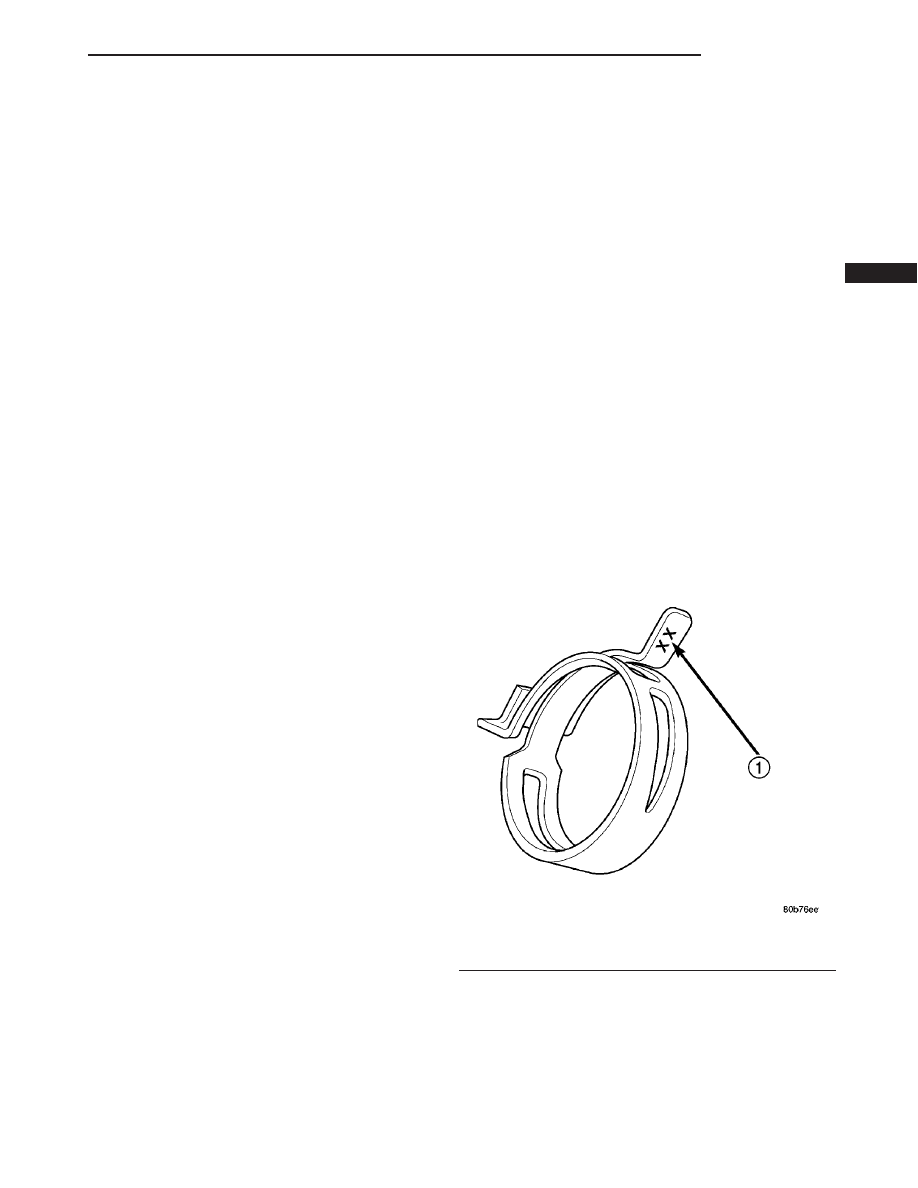Chrysler RG Voyager. Manual - part 680

COOLING
TABLE OF CONTENTS
page
page
COOLING
DIAGNOSIS AND TESTING - COOLING
SYSTEM LEAK TEST . . . . . . . . . . . . . . . . . . . . 2
DIAGNOSIS AND TESTING - COOLING
SYSTEM FLOW CHECK . . . . . . . . . . . . . . . . . 3
DIAGNOSIS AND TESTING - COOLING
SYSTEM AERATION . . . . . . . . . . . . . . . . . . . . 3
DIAGNOSIS AND TESTING - COOLING
SYSTEM DEAERATION . . . . . . . . . . . . . . . . . . 4
SYSTEM DRAINING . . . . . . . . . . . . . . . . . . . . 4
SYSTEM FILLING . . . . . . . . . . . . . . . . . . . . . . 4
ADDITIONAL COOLANT . . . . . . . . . . . . . . . . . 4
LEVEL CHECK . . . . . . . . . . . . . . . . . . . . . . . . 4
COOLING SYSTEM CLEANING/REVERSE
FLUSHING . . . . . . . . . . . . . . . . . . . . . . . . . . . . 4
. . . . . . . . . . . . . . . . . . . . . . . . . . . . . 6
. . . . . . . . . . . . . . . . . . . . . 7
. . . . . . . . . . . . . . . . . . . . . . . 8
. . . . . . . . . . . . . . . . . . . . . . . . . . . . . . . 14
. . . . . . . . . . . . . . . . . . . . . . . . . 38
COOLING
DESCRIPTION
DESCRIPTION - COOLING SYSTEM
The cooling system components consist of a radia-
tor, electric fan motors, shroud, pressure cap, thermo-
stat, transmission oil cooler, water pump, hoses,
clamps, coolant, and a coolant reserve system to com-
plete the circuit.
DESCRIPTION - HOSE CLAMPS
The cooling system uses spring type hose clamps.
If a spring type clamp replacement is necessary,
replace with the original Mopar
t equipment spring
type clamp.
CAUTION: A number or letter is stamped into the
tongue of constant tension clamps. If replacement
is necessary, use only a original equipment clamp
with matching number or letter (Fig. 1).
Fig. 1 Spring Clamp Size Location
1 - SPRING CLAMP SIZE LOCATION
RS
COOLING
7 - 1